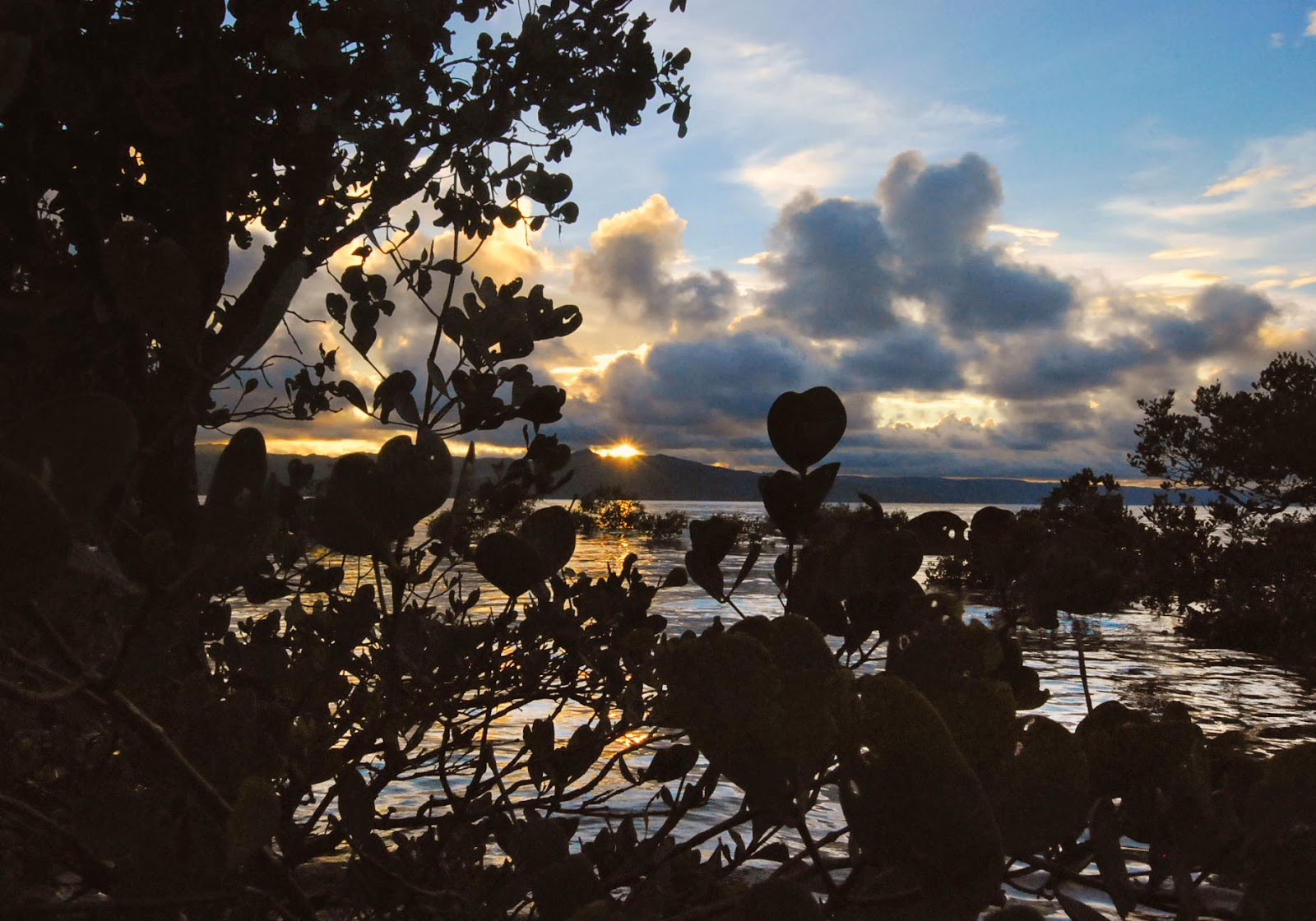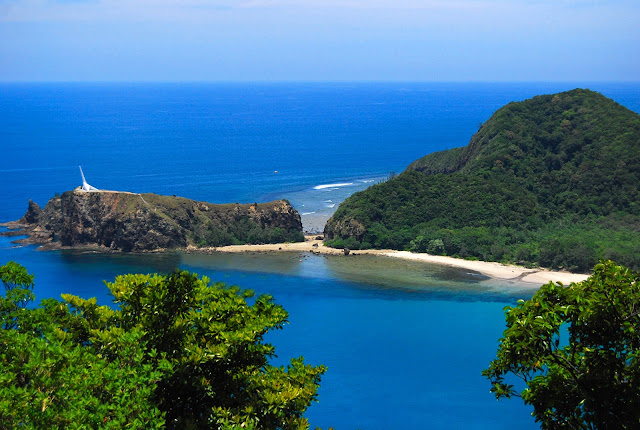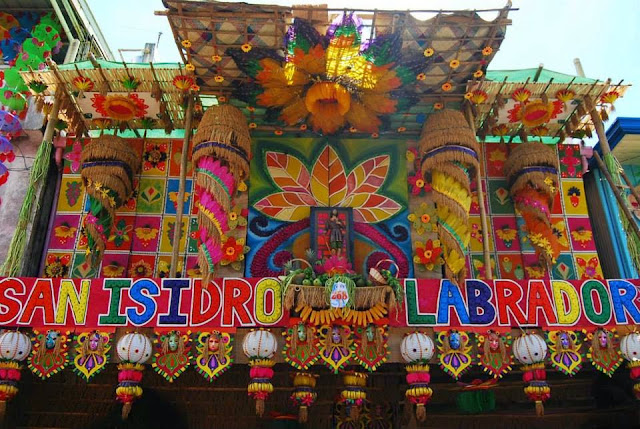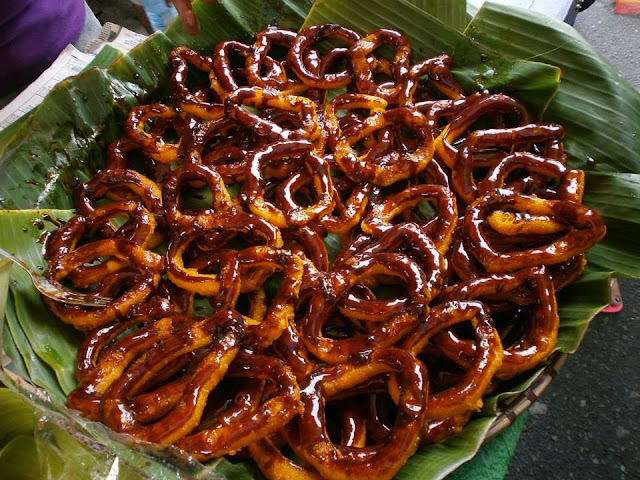Rumor has it that there is an upcoming tourist destination in Quezon Province, teeming with fine white sand beach, pristine salt water, and a large number of mangroves which prevails over the island. I've read many blogs, saw photos from friends and it seems like I'm already left behind! But anyway, I sought the company of my friends and planned about the trip. We read a blog about a beach resort in the island and pinned a date for this rambling. The island is called Cagbalete Island (
cug-buh-leh-teh), located in Mauban, a municipality of Quezon Province.
 |
| Petiks. |
And we planned to go to Villa Pilarosa, that we can't wait to see the place because of its captivating photos we saw on a blog. So off we went to Mauban, took the passenger boat at the port and arrived at the resort past noon. The tide was high then but the ankle deep water on the concrete pathway didn't stop us from going. A lady met us just beside this hammock, and said, "Magandang hapon, sino po kayo?" ("Good afternoon, may I know you?"), and afterwards called the owner of the resort and asked the same question. We were all speechless at first, thinking that we would be accommodated at once, but the owner explained that the place is private and a reservation should be made before going to the resort and that they had refused to accept visitors because they are already full. We were kind of getting lost, but despite of the situation the kind owner still let us in and gave us a place to pitch our tent. We were very thankful for her generosity, that was so nice of her.
 |
| The pathway leading to the resort during high tide. |
After the tents were settled, our adventure had just begun! We started roaming around to get familiar with the place. The island is verdant with various species of flora and fauna. Old and sturdy mangroves are mostly found along the coast, and a sanctuary to a variety of bird species. In fact, an oriole was nesting atop of the trees where we pitched our tents and thinking we would be a threat to them, they kept on attacking us whenever we move or talk or laugh. They're cranky birds but they're cute.
 |
| The cranky oriole. |
 |
| Birds spying behind leaves. |
Late in the afternoon we explored the beach area which was then still submerged with sea water, the mangroves are all over the coasts, big and small. This area is the beach on the left side of the resort but it is not a swimming area but you can walk along the mangroves. It is a suitable place for taking photos. You can find interesting subjects along the coasts.
 |
| Not a swimming area. |
The sun was about to set and we can't miss it for we have been waiting for this moment and each of us had set our positions onto where we could get the best angle. But the sun was covered with clouds, I was slightly short in time when I arrived that it has almost descended, and just peeking behind Mt. Banahaw, nevertheless the view was still splendid.
 |
| Why are you hiding from us Sun? |
The fiery sky and ember sea met after sunset and it was so captivating that we can't get out of the water to capture this natural phenomenon, even if it was already getting dark! Isn't that fantastic?
 |
| Fiery. |
Well, dinnertime came, we feasted on grilled fish which the resort staff willfully prepared for us, some salted eggs and steamed rice. I would like to thank the resort staffs for their kind assistance in providing us all that we need, they all wear smiles and very polite when talking to their guests. Dinner is over we went back to the campsite and planned for the next day's activities. We were anticipating for a sunny day on the next day but it rained in the wee hours of the morning, so the ripples of sand that we were waiting were delayed. You know whatever happens, it can't get away from us for we will patiently wait.
The water starts to subside but it was still raining on the other side of the island. Can you see it?
 |
| Patience pays. |
Cagbalete Island is gifted with a great extent of mangroves along its coasts, they come in trees, shrubs, palms and ferns. As far as I know, mangroves plays a major role in protecting a landmass from possible water surges that can devastate natural resources and so as with people's lives. So, please let us propagate and preserve mangroves, it is a gift of Mother Nature.
 |
| Ped Xing. |
Villa Pilarosa is a haven for nature lovers and photographers, there are so many photo opportunities along the beach area and inland as well. The texture of the waves of sands are just perfect accessory to the the big and twisted stems and roots of old mangroves. And it was such a nice feeling to commune with them even if it the sun was hiding, it still projected the subject you want to show.
 |
| SWIM! |
There are may areas where you can swim, you can choose for your own, just avoid the baby mangroves, it can hurt your feet also. But this one is perfect for swimming. Do you think so?
The line of boats in the photo, takes some tourists on this part to swim, the beach is free from mangroves and it has a long stretch of beach so it can accommodate a lot of tourists.
 |
| Baby mangroves sprouting. |
I have a lot of photos to show but my space is getting smaller, I will write again about this place when I go back there. The Villa Pilarosa adventure is another experience that I will truly cherish. Aside from the company of friends who made this trip exciting, I also want to thank Ma'am Cynthia the resort owner and her staffs for their cordial accommodation, even if we don't have any reservation. Sometimes you meet kind people in places least you expect it and we were in the right place.
HOW TO GET THERE?
1. Cagbalete Island is accessible by land and by water. From Manila, you can take the road going to Tayabas, Quezon Province via SLEX, Pan Philippine Highway. Take the road going to the town of Mauban which is the gateway to Cagbalete Island.
2. Take the big passenger boat bound for Cagbalete Island for 50 pesos fare or you can rent a private boat from the resort.
3. If you prefer the passenger boat, you will disembark at Sabang Port and take another private boat going to the Villa Pilarosa. The fare is negotiable.
4. An overnight stay at the resort is preferable, cottages are available, you can also pitch tent like what we did, just advise the owner if you are going to do so.
For more information you can call Villa Pilarosa at mobile no. 09993663884.
I hope I have provided enough information. Thank you for reading!!
Reminders:
1. Bring food and water.
2. Bring insect repellant and don't forget your sunblock lotion.
3. And DISPOSE YOUR GARBAGE PROPERLY. BRING TRASH BAGS.























